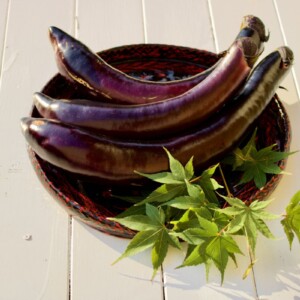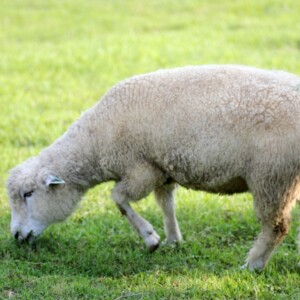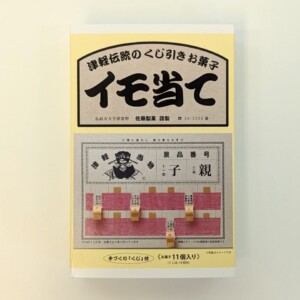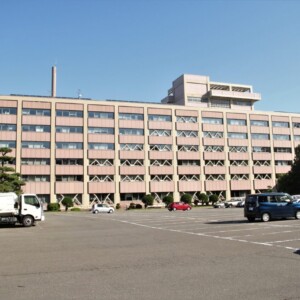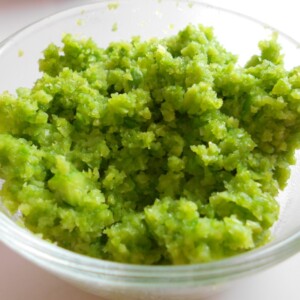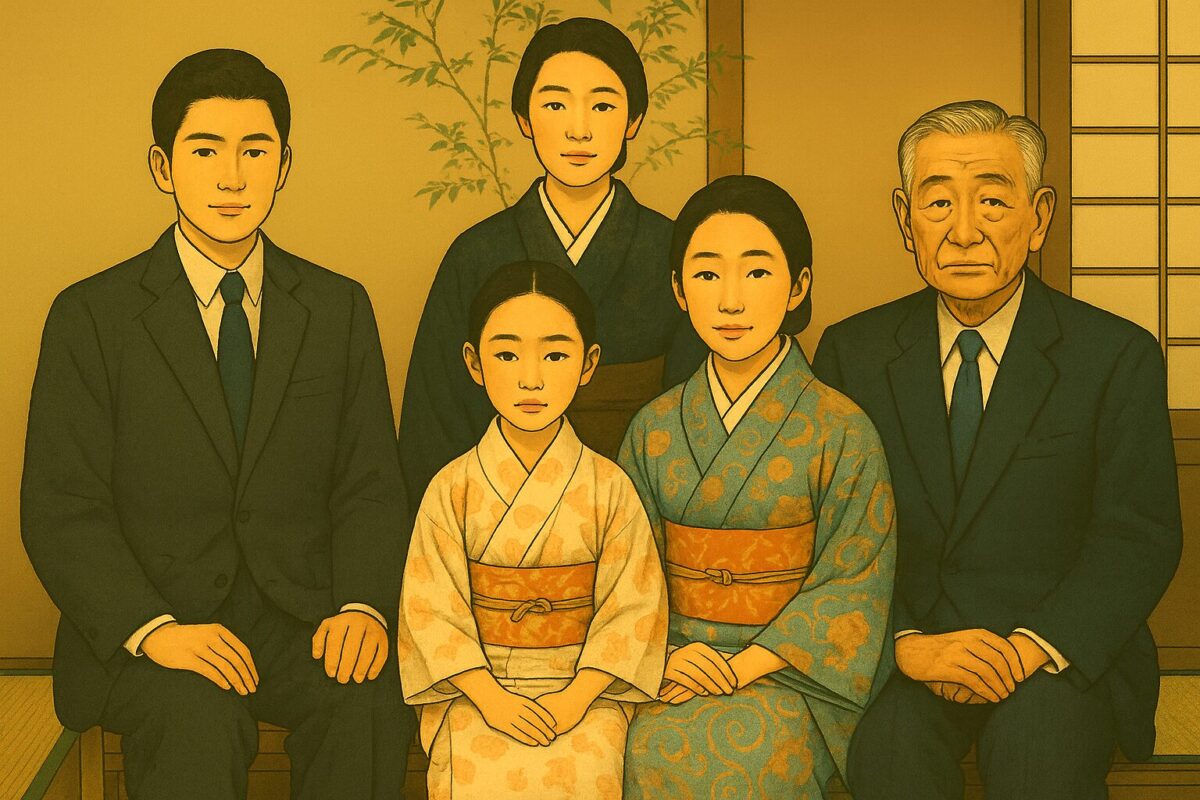
30 Surnames with Roots in Miyagi Prefecture's Prestigious Families
table of contents
- 1 30 Surnames Connected to Distinguished Families in Miyagi Prefecture (in alphabetical order)
- 1.1 Akiu
- 1.2 Aneha
- 1.3 Boar hunting
- 1.4 Ishikawa
- 1.5 Ishimoda
- 1.6 One chestnut
- 1.7 Ichiriki
- 1.8 Ujiie
- 1.9 Endo
- 1.10 Okura
- 1.11 Osaki
- 1.12 Kasahara
- 1.13 Katakura
- 1.14 Kannari
- 1.15 Kumagai
- 1.16 Kurokawa
- 1.17 Kokubun
- 1.18 Kotani
- 1.19 Sanbu Issho (three-thirds and one place)
- 1.20 Shiroishi
- 1.21 Tadaki
- 1.22 Date
- 1.23 Forty-nine Temples
- 1.24 Dodo
- 1.25 Tomizawa
- 1.26 Fujisaki
- 1.27 Myochin
- 1.28 Moniwa
- 1.29 Absent
- 1.30 Watari
- 2 A series of surnames with roots in prestigious families from each prefecture in Tohoku
Every place across Japan, there are prestigious and famous families who are rumored to be so-called "local famous people." Even if you say, "We are a very ordinary family," it is not uncommon to find that if you trace our ancestors carefully, they actually belong to a family of venerable samurai.
In this article, we look into the surnames of prestigious families in Miyagi Prefecture. If you have ever had a classmate with a surname like that, it's possible that they actually come from a good family
30 Surnames Connected to Distinguished Families in Miyagi Prefecture ( in alphabetical order)
Many of Miyagi Prefecture's prominent families have their roots in local feudal lords who have been rooted in the area for generations, but during the Sengoku period, they seem to belong to either the Date clan, which expanded its power from the south of the prefecture, the Osaki clan from the north, or the Kasai clan from the coastal area
Akiu
A local lord of Natori County, Mutsu Province. Legend has it that they were originally refugees of the Taira clan. They took the name Akiu because they governed the area surrounding present-day Akiu Onsen, which still has place names today: five villages in Akiu-go (Baba, Shinkawa, Nagabukuro, Sakaino, and Yumoto). During the Edo period, the main line became a senior vassal of the Sendai Domain
Myojiyurai.net which lists the number of people with the surname nationwide based on government statistics and national telephone directory data , there are currently approximately 2,000 people with the surname Akiu nationwide, with the highest numbers in Yamagata, Hokkaido, and Miyagi.
Aneha
the lord of Aneha Castle in Nisasako, Kurihara County, Mutsu Province. His ancestors vassals of Fujiwara Yasuhira, the fourth head of the Oshu Fujiwara clan . He served the Osaki clan, but later served Date Masamune.
Myojiyurai.net which lists the number of people with the surname nationwide based on government statistics and national telephone directory data , this is a rare surname with only around 200 people nationwide, of which more than 100 are concentrated in Miyagi Prefecture.
Boar hunting
A wealthy merchant who went by the name Yokotaya in Kesennuma, Motoyoshi County (present-day Kesennuma City). For generations, the head of the family ran a shipping wholesaler under the name Shinbei. After a merchant ship was wrecked, he switched to producing nori seaweed, which became a success, and after the Meiji Restoration, he ran a salt production business
Ishikawa
A former feudal lord of the Sendai domain during the Sengoku period. He served under Mutsu no Kami Minamoto no Yoriyoshi in the Former Nine Years' War and was awarded Ishikawa County (present-day Ishikawa County, Fukushima Prefecture) as a reward for his military achievements, and began to call himself the Ishikawa clan
He was an independent feudal lord for many years, but was stripped of his title during Toyotomi Hideyoshi's Oshu Shioki. As a result, he became a vassal of the Date clan and was given a fief of 21,000 koku in Kakuda, Igu County, Mutsu Province (present-day Kakuda City, Miyagi Prefecture). During the Edo period, he held the top position within the clan
Ishimoda
A senior vassal of the Sendai Domain. During the Kamakura period, he served in the Oshu War under Date Tomomune, the first head of the Date clan, and lived in Ishimoda, Date County, Mutsu Province (present-day Kunimi Town, Date County, Fukushima Prefecture), where he came to call himself Ishimoda
One chestnut
A local lord of Tamazukuri County, Mutsu Province. Also known as "Hitotsukuri." A senior vassal of the Osaki clan, Hitokuri Hogyu and his grandson Takaharu are well known. Hogyu fought on the side of the rebels in the Kasai-Osaki Uprising of 1591 at the advanced age of 92, but was killed in battle at Sanuma Castle. After the fall of the Osaki clan, his grandson Takaharu served Mogami Yoshiaki of Yamagata
The remains of Ichikuri Castle, where the Ichikuri clan was based, are located in what is now Iwadeyamashitaichikuri, Osaki City, Miyagi Prefecture
Ichiriki
He had a shop in Omachi 5-chome, Sendai, and was one of the two major tea merchants in Sendai, along with Otake Sosuke. He founded the Kahoku Shimpo newspaper after the Meiji Restoration, and Tohoku Broadcasting after the war
Ujiie
A local lord of Tamazukuri County, Mutsu Province. Lord of Iwadeyama Castle. During the Nanboku-cho period, he accompanied Shiba Iekane, who was appointed as the Oshu Tandai (Oshu inspector), to Oshu. He ruled Iwadeyama Castle as a vassal of the Osaki clan, a branch of the Shiba clan for generations
After the fall of the Osaki clan, he became a vassal of the Date clan
Endo
The family was a senior retainer of the Sendai domain and lord of Ichihasakogawaguchi (currently Ichihasako, Kurihara City). Its founder was Endo Motonobu, who served Date Terumune during the Sengoku period. Since then, the family has been a line of senior retainers, ruling Ichihasakogawaguchi for generations, from the Edo period onwards. Their descendants served as chief priests of Shiogama Shrine after the Boshin War
Okura
A local lord from Okura, Miyagi County, Mutsu Province (present-day Okura, Aoba Ward, Sendai City). It is said that a man named Shigeyoshi, the son of Minamoto no Yoshikata of the Seiwa Genji clan and brother of Kiso Yoshinaka, hid in this area and took the name Okura, but the truth of this is unknown
The Kokubu clan later served the Date clan, but was cut off when their head was killed in the Kasai-Osaki Rebellion. The bloodline moved to Kumagane Seki (present-day Kumagane, Aoba Ward, Sendai City) and changed its name to the Seki clan
Osaki
A feudal lord who ruled over the five counties of Mutsu Osaki (Shida, Tamatsukuri, Kami, Toda, and Kurihara) during the Sengoku period. The Shiba clan, whose ancestor was Shiba Iekane, who went to Oshu as the Oshu kanrei during the Nanboku-cho period
Iekane's eldest son, Tadamochi, took the name "Osaki" after Osaki Manor in Katori County, Shimousa Province (Katori City, Chiba Prefecture), which had been the domain of his ancestors, the Ashikaga Ieuji, and became the first head of the Osaki clan. Its tributaries include the Mogami clan and the Tendo clan
During the Sengoku period, the clan gradually declined and came under the control of the rising Date clan, but after not participating in Toyotomi Hideyoshi's siege of Odawara, its territory was confiscated during the later Oshu Shioki and it was destroyed
Kasahara
A local lord from Shida County, Mutsu Province. Originally from Kasahara, Ina County, Shinano Province (present-day Ina City, Nagano Prefecture), they are said to be descendants of Kiso Yoshinaka. They served the Osaki clan for generations, with Miyazaki Castle (present-day Miyazaki, Kami Town, Kami County, Miyagi Prefecture) as their residence. After the fall of the Osaki clan, they served the Date clan, and during the Edo period became senior vassals of the Sendai domain
Katakura
He is said to have lived in Katakura Village, Ina County, Shinano Province (present-day Iida City, Nagano Prefecture), but followed the Osaki clan to Oshu. Katakura Kagetsuna, the first head of the Katakura clan of the Sendai domain, served as a close aide to Date Masamune and was involved in military strategy together with Date Masamune
His descendants lived in Shiroishi Castle, which had been left standing as an exceptional measure under the one castle per province rule, for generations, but after their defeat in the Boshin War at the end of the Edo period, their fief and Shiroishi Castle were confiscated, and they set off to develop Hokkaido in search of new lands, contributing to the development of what is now Noboribetsu City and Shiroishi Ward in Sapporo
Kannari
They were local lords from Kanenari, Kurihara County, Mutsu Province (present-day Kanenari, Kurihara City, Miyagi Prefecture). It is said that the descendants of Kon Tametoki, a powerful lord in Mutsu Province in the late Heian period, moved to Kanenari and took the name Kanenari. They served the Osaki, Kasai, and Mogami clans, and after the Mogami clan was abolished, they became samurai of the Sendai domain
Myojiyurai.net which lists the number of people with the surname nationwide based on government statistics and national telephone directory data , there are currently around 4,000 people with the surname Kanari nationwide, of which approximately 1,700 are concentrated in Fukushima Prefecture, particularly in Iwaki City.
Kumagai
They were local lords of Kesen County, Mutsu Province. Their ancestor is said to be Naomune, the younger brother of Kumagai Naokuni, a vassal of the Kamakura Shogunate, who traveled to Akaiwa Castle (present-day Matsukawa, Kesennuma City, Miyagi Prefecture) in 1189. They served the Kasai clan, and many branches of the clan split off to spread their influence, centering on Kesen County
Although there were frequent conflicts between the clans, members of the family later served the Date clan and became samurai of the Sendai domain
Kurokawa
The clan was a local lord in Kurokawa County, Mutsu Province. A branch of the Shiba clan and the Osaki clan, the Mogami clan played an important role as a local lord under the Osaki clan due to their descent from the Shiba clan. Though they submitted to the Date clan in the early 16th century, the ninth head of the clan, Kurokawa Haruhisa, showed consideration for both the Osaki and Date clans, such as marrying his daughter to Rusu Masakage, who was on the Date side, and adopting Yoshiyasu, the son of Yoshinao Osaki
However, because he did not take part in Toyotomi Hideyoshi's campaign against Odawara, he was stripped of his rank during the Oshu Shioki and served the Date clan. After the death of the 11th head, Sueuji, the clan became extinct without an heir
Kokubun
They were a local lord whose power was centered around the area of Mutsu Kokubunji Temple in Mutsu Province, from the southern part of Miyagi County, in what is now the area between Aoba Ward and Miyagino Ward in Sendai City, and who were based in Chiyo Castle (later Sendai Castle), which was formerly the base of Date Masamune
At the end of the Sengoku period, the Date clan welcomed Kokubu (Date) Morishige and made him their vassal, but in 1596 he incurred the displeasure of Date Masamune and the Kokubu clan was wiped out as a feudal lord. Morishige then took refuge with the Satake clan in Hitachi Province, and his descendants continued to exist in the Kubota Domain in Akita until the end of the Edo period
Kotani
A wealthy merchant in the Sendai castle town, he opened a branch in Kokubuncho for Otani Shozaburo, a merchant from Hino, Omi
He developed into a wealthy merchant dealing in medicinal herbs and china, and the Tenpo famine , he was one of six wealthy merchants who were ordered by the domain to travel to the Kami-no-Kami region to purchase rice and negotiate fundraising.
Sanbu Issho (three-thirds and one place)
The family's roots lie in the Nagae clan, who were given Fukayaho in Monou County (present-day Higashimatsushima City and Ishinomaki City) for their achievements in the Oshu War, and can be traced back further to the main line of the Kamakura clan, whose ancestor was Kamakura Kagemasa of the Kanmu Heishi clan
At the end of the Sengoku period, Nagae Katsukage, the last head of the Nagae clan, divided the territory into three parts, with his second son Kageshige taking the name Yamoto Kageshige and moving to Yamoto Castle (present-day Yamoto, Higashimatsushima City), and his third son Iekage taking the name Sanbunichisho Iekage and moving to Sanbunichisho Castle (present-day Asai, Higashimatsushima City)
Although the main branch of the Nagae family was wiped out, the Sanbu Ichisho clan continued to exist as samurai of the Sendai domain even after the Edo period
Myojiyurai.net which lists the number of people with the surname nationwide based on government statistics and national telephone directory data , this is an extremely rare surname with only around 10 to 20 people nationwide, and can only be found in a few places in Nara and Shizuoka prefectures.
Shiroishi
The founder of the family, Karita Tsunemoto, was the son of Fujiwara Tsunekiyo Fujiwara Kiyohira, the founder of the Oshu Fujiwara clan. Tsunemoto fought alongside Kiyohira in the Gosannen War, and after the war, he was given the districts of Karita and Igu by Minamoto no Yoshiie, better known as Hachiman Taro. He settled in Shiraishi, Karita County, and took the name Karita. It was around the time of the sixth head of the family, Hidenaga, that the family began to use the name Shiraishi, and later, the relationship between the two clans grew closer when a son was adopted from the Date clan.
The family came under the control of the Date clan when Masamune Date's great-grandfather, Tanemune Date, became head of the family, and during Masamune's reign they held the Teraike Castle in Tome County (present-day Tome City, Miyagi Prefecture). In 1615, Munenao Shiraishi was inducted into the family due to his military achievements at the Battle of Osaka, and was allowed to use the surname Date, and thereafter called themselves the "Tome Date family."
Tadaki
He was a senior vassal of the Sendai domain, and took the surname Tachibana, serving the Date clan for generations
Tosa Nariyuki Tadaki, a chief retainer of the Sendai domain at the end of the Edo period, unified the domain's opinion in support of the shogunate the Oshu-Uetsu Alliance , but after the war he took full responsibility for the defeat and was executed at the Sendai domain residence in Azabu.
Date
A feudal lord of the Mutsu region during the Sengoku period. The name "Date" was first used when Date Tomomune, a vassal of the shogunate during the Kamakura period, was awarded Date County in Mutsu Province (present-day Date City, Fukushima Prefecture) in recognition of his achievement in defeating Sato Motoharu of Shinobu County (present-day Fukushima City, Fukushima Prefecture) during the Oshu Wars. Prior to that, he was known as Nakamura
During the reign of the 15th head of the family, Date Harumune, the family moved its base to Yonezawa Castle (present-day Yonezawa City, Yamagata Prefecture), and during the reign of the 17th head of the family, Date Masamune, defeated the Nihonmatsu City and Ashina clans, and subjugated the Tohoku daimyo such as Osaki, Tamura, Ishikawa, and Shirakawa, establishing the largest territory of the Date clan
Later, under Toyotomi Hideyoshi's Oshu Shioki, he moved his base to Iwadeyama (present-day Osaki City, Miyagi Prefecture), and after the Battle of Sekigahara, he moved to Sendai in 1601. During the Edo period, he became the lord of the Sendai domain
Forty-nine Temples
The family has its roots in Shijukuin, Date County, Mutsu Province (present-day Date City, Fukushima Prefecture). Nakajima Munemoto was a vassal of the Nakajima clan, who served the Date clan, and during the Sengoku period, he was appointed lord of Kanayama Castle (present-day Kanayama Yachi Kido, Marumori Town, Igu County) by his lord, Date Terumune, and moved there
Myoji Origin Net which lists the number of people with the surname nationwide based on government statistics and national telephone directory data , this is a rare surname with only around 50 confirmed cases nationwide, of which approximately 20 are concentrated in Miyagi Prefecture, particularly in Marumori Town, Igu District.
Dodo
A local lord from Toda County, Mutsu Province. A branch of the Osaki clan, they served the Osaki clan for generations, based in Momo Castle (present-day Tajiri, Osaki City, Miyagi Prefecture)
Myoji Origin Net which lists the number of people with the surname nationwide based on government statistics and national telephone directory data , the surname is still relatively common in Miyagi Prefecture, and is particularly prevalent in Ohira Village, Kurokawa District.
Tomizawa
They were local lords from Kurihara County, Mutsu Province. They are said to be a branch of the Kasai clan. They were based in Iwagasaki Castle (Tsurumaru Castle) in Tomizawa, Kurihara County (present-day Iwagasaki, Kurikoma, Kurihara City, Miyagi Prefecture), which was on the border between the Kasai and Osaki clans
He later moved to Hanamaki in Iwate and became a samurai of the Nanbu domain during the Edo period
Fujisaki
A wealthy merchant who called himself Hinoya in Sendai Castle Town
In 1819, the first Saburosuke became independent and founded the textiles store "Ebisu-ya." By the end of the Edo period, it had developed into one of the leading merchants in the Sendai castle town, and after the Meiji Restoration, it was reorganized as Fujisaki Kimono Store Co., Ltd., and in 1930 "Fujisaki" and became a department store.
Myochin
Armorer . It is said that the family name Myochin was given to them by Emperor Konoe at the end of the Heian period. During the Muromachi period, the 17th head of the family, Myochin Nobuie, served Takeda Shingen and was known as a "master." In the 16th century, they moved to Odawara, and during the Edo period, they settled in Edo.
Among the families spread across the country, the Sendai Myochin family was particularly famous, serving the Katakura family, chief retainers of the Sendai domain
Moniwa
Originally a clan descended from the Saito clan of the Northern Fujiwara clan, Toshihito lineage, who called themselves Oniwa, they were long-time retainers of the Date clan, with records showing that the Oniwa clan served as vanguards in the battles of Date Muneto, the 8th head of the Date clan
During the reign of Yoshinao (Sagetsusai), the 11th head of the Oniwa clan, the clan established itself as a senior vassal of the Date clan. Later, his eldest son, Tsunamoto, was appointed magistrate by Masamune. Tsunamoto was later known as men
Tsunamoto was well-liked by Toyotomi Hideyoshi, and it is said that Hideyoshi ordered Tsunamoto to change his surname from Oniwa to Moniwa
Absent
The Rusu clan was a samurai clan whose ancestor was Izawa Iekage, who claimed to be the great-great-grandson of Fujiwara Michikane of the Northern Fujiwara clan.In 1190, after the Oshu Conquest, Iekage was appointed by Minamoto no Yoritomo as the Rusu governor of Mutsu Province, and his descendants inherited the position, so they took on the name Rusu, using the title as their surname
After the 13th head of the family, Rusumochiie, the Date clan sent successively adopted sons to the family, who came under its influence. During the Edo period, the family changed its name to Date as a branch of the Date clan, ruled Mizusawa, and became known as the "Mizusawa Date family."
Watari
The family began when Takeishi Tanemori, the third son of Chiba Tsunetane, a vassal of the Kamakura shogunate, was granted the three counties of Uda, Igu, and Watari from the territory his father had acquired during the Oshu War, and his great-grandson, Munetane, settled in Watari. The family has been called the Watari clan since the time of the seventh head of the family, Hirotane
During the Sengoku period, the clan came under the control of Date Tanemune, whose power was rapidly expanding. As the 16th head of the clan, Watari Munetaka, had no sons, he adopted Motomune, who was born to his daughter whom he had married off to Date Tanemune, and Motomune became the 17th head of the Watari clan
During the reign of the 17th head of the family, Sadamune, the family was given the surname Date and became part of the Date clan. During the Edo period, they held a fief of 22,600 koku centered around Wakuya Fortress in Tonoda County and called themselves the "Wakuya Date family."
Reference book: Encyclopedia of Local Cultures of 47 Prefectures, Miyagi Prefecture – Maruzen Publishing







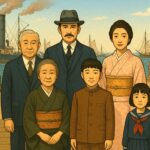
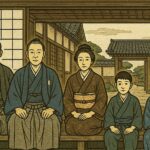
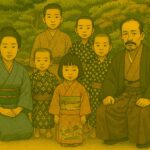
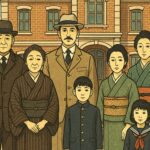

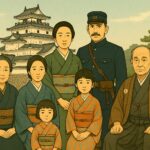





![It's like a scarlet jewel! With the bubble wrap, "Putchinko" texture, the food is delicious today! [Miyagi Prefecture] 1623248_m](https://jp.neft.asia/wp-content/uploads/2025/06/1623248_m-150x150.jpg)

